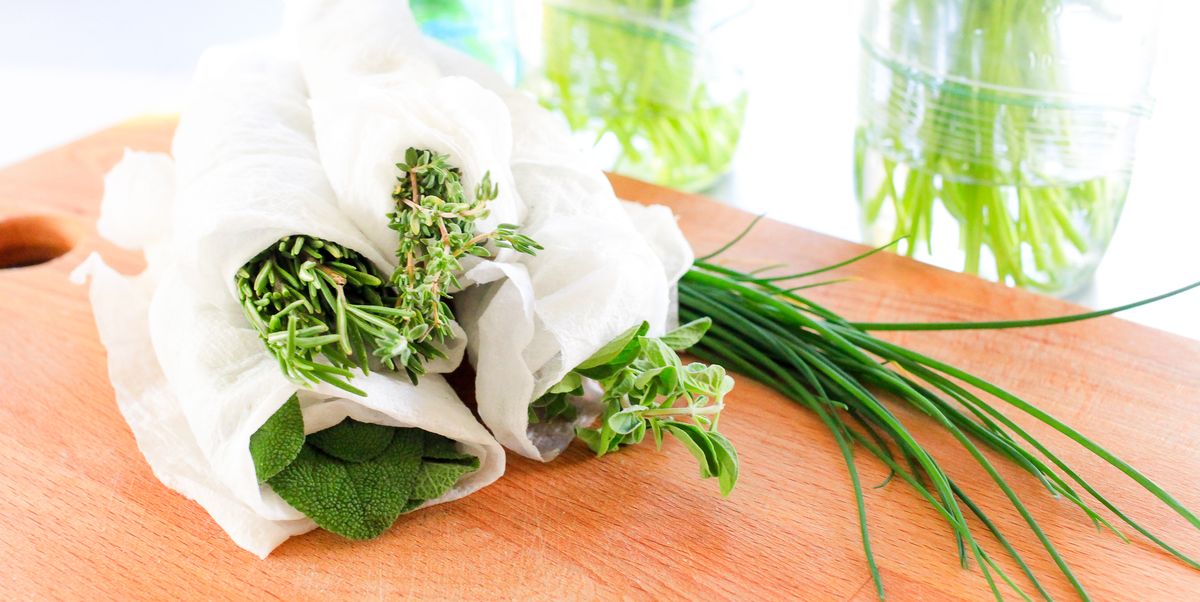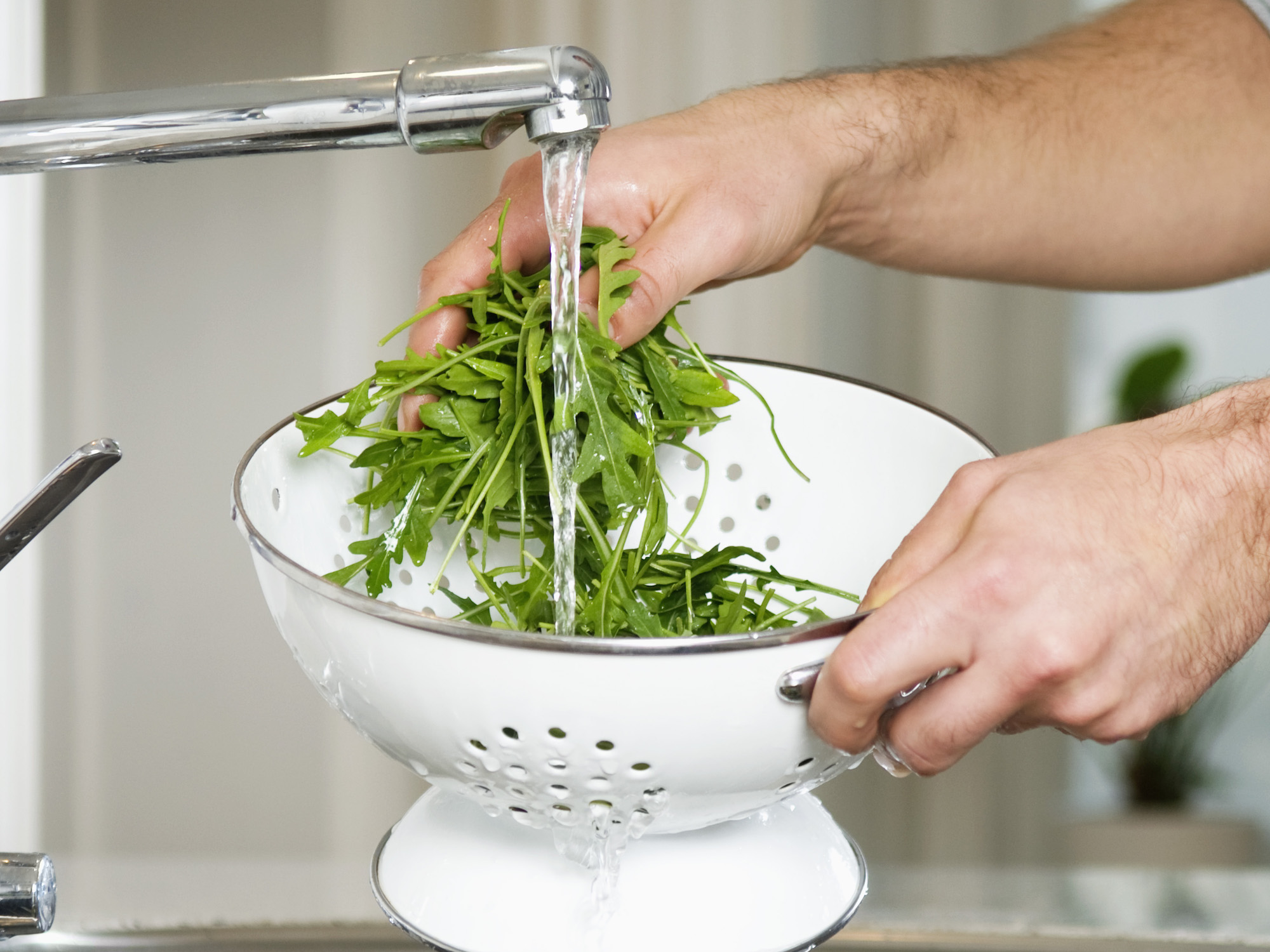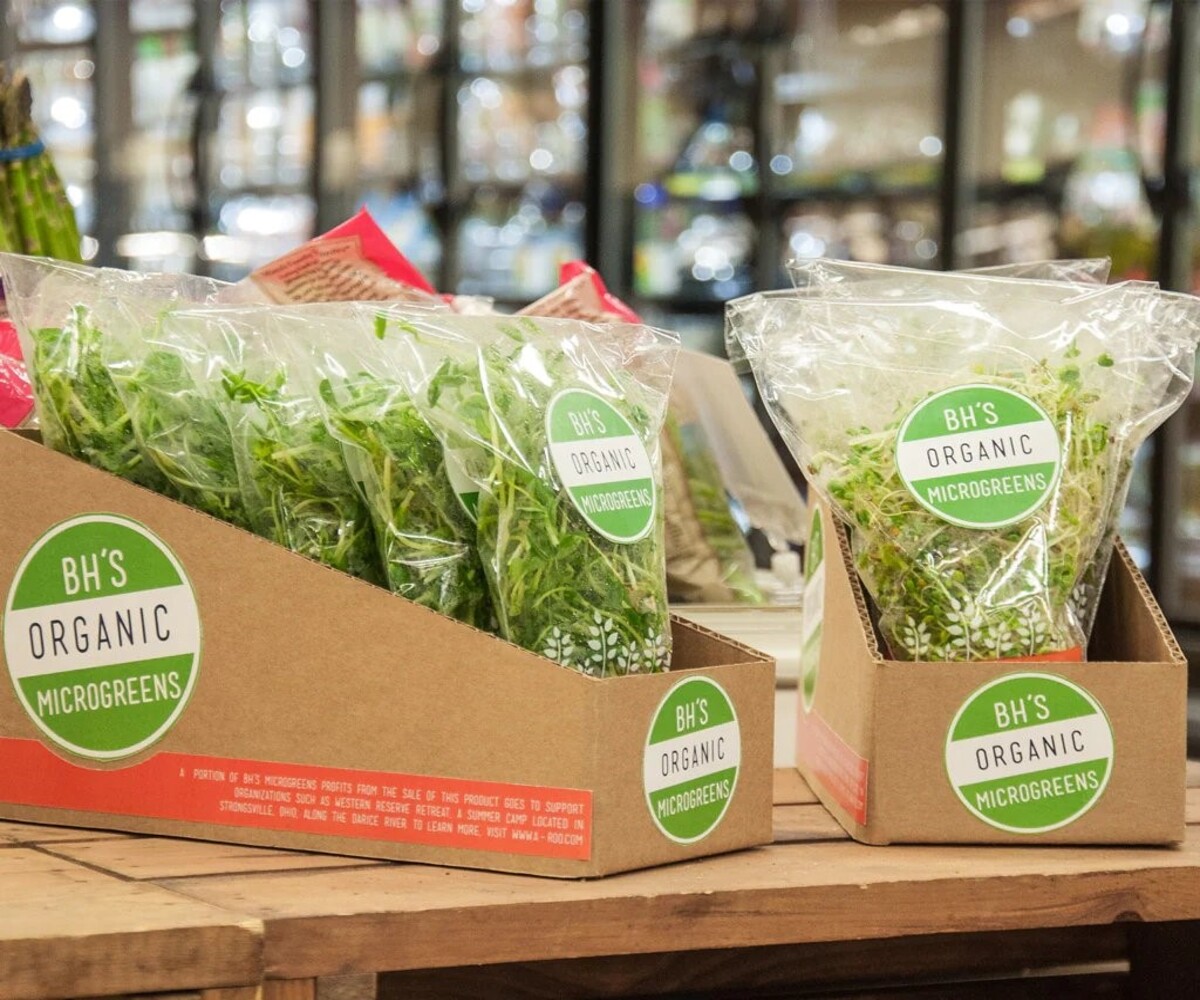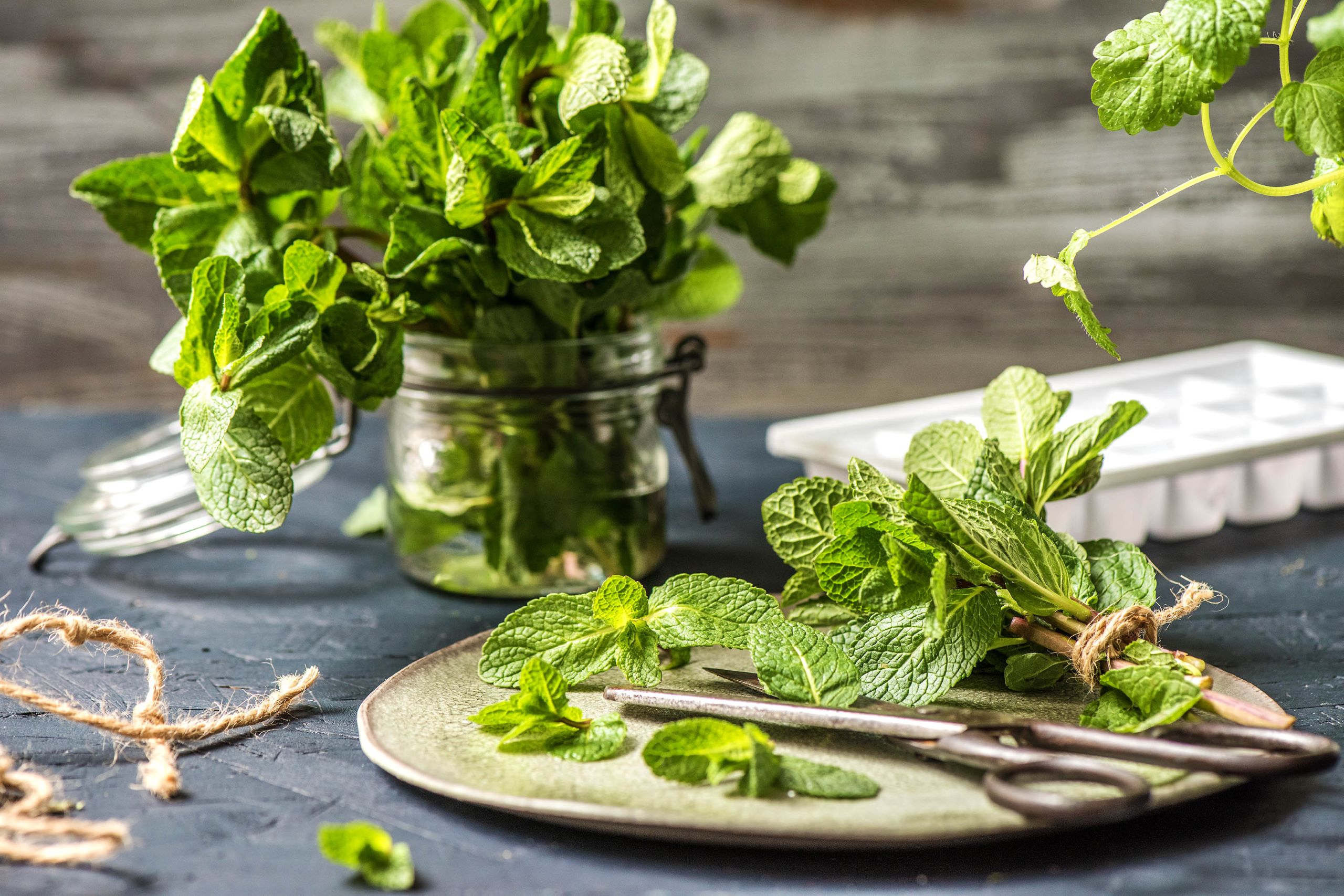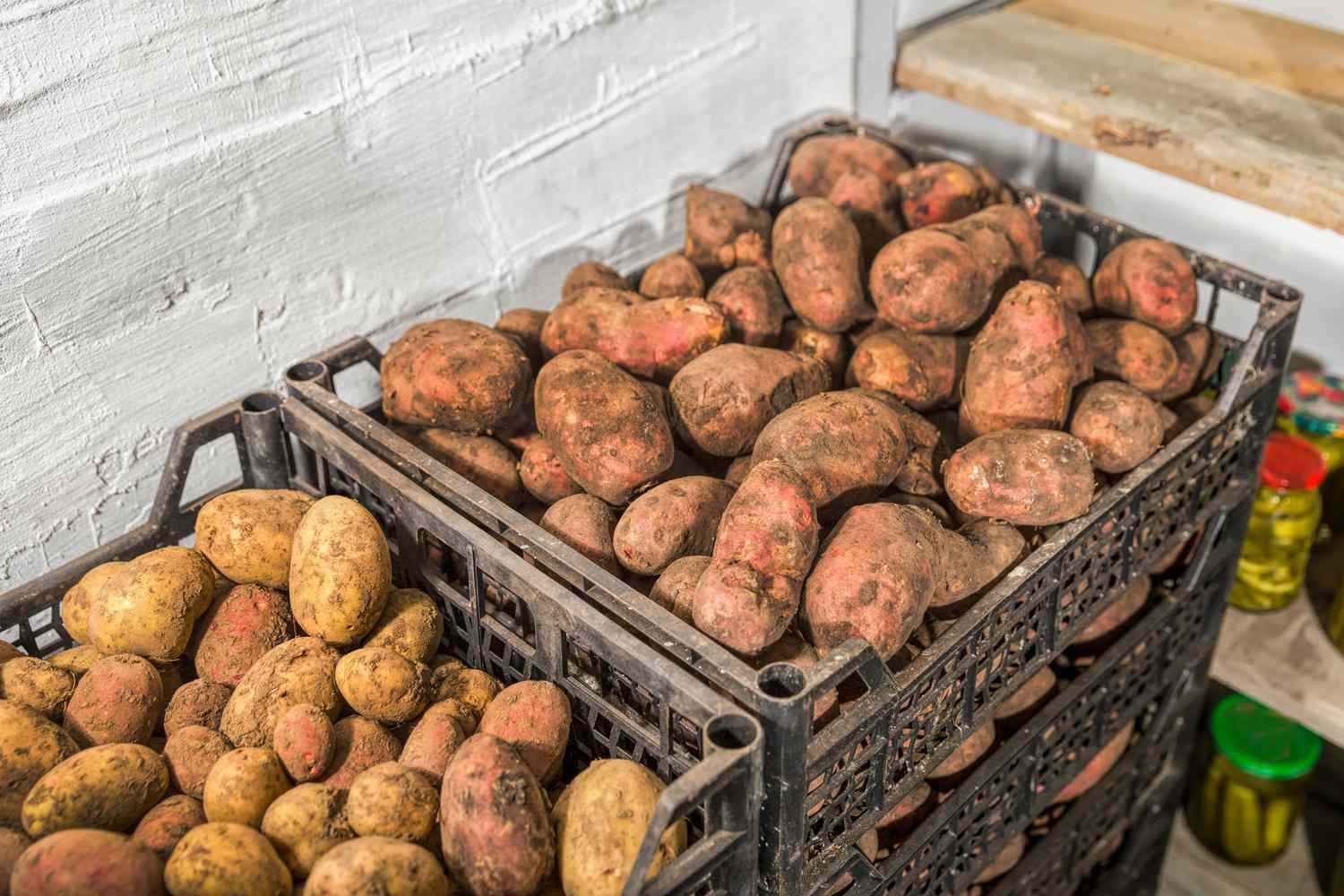Home>Types of Gardening>Edible Gardening>How To Eat Fresh Rosemary


Edible Gardening
How To Eat Fresh Rosemary
Published: January 30, 2024
Learn how to incorporate fresh rosemary from your edible garden into your meals with our helpful guide. Explore tips on harvesting, storing, and enjoying this versatile herb.
(Many of the links in this article redirect to a specific reviewed product. Your purchase of these products through affiliate links helps to generate commission for Chicagolandgardening.com, at no extra cost. Learn more)
Table of Contents
Introduction
Welcome to the wonderful world of fresh rosemary! Whether you’re an experienced gardener with a green thumb or a novice looking to explore the joys of edible gardening, incorporating fresh rosemary into your culinary adventures is a fantastic idea. Not only does rosemary add a delightful aroma and flavor to dishes, but it also boasts several health benefits.
Rosemary, a perennial herb native to the Mediterranean region, has been used for centuries as a culinary and medicinal herb. Its distinct pine-like fragrance and robust flavor make it a popular choice in various cuisines. But it’s not just the taste that makes rosemary special – this herb is also packed with nutrients and antioxidants that contribute to overall well-being.
One of the many benefits of fresh rosemary is its high concentration of essential oils, including cineole, camphor, and rosmarinic acid. These compounds have been shown to have anti-inflammatory, antimicrobial, and antioxidant properties, making rosemary an excellent addition to a healthy diet. Additionally, rosemary contains vitamins C and A, calcium, iron, and fiber, all of which are important for maintaining good health.
Moreover, the aromatic compounds in rosemary have been linked to improved digestion, enhanced cognitive function, and even reduced stress and anxiety levels. In fact, the scent of rosemary has been used in aromatherapy for centuries to promote relaxation and mental clarity.
Whether you’re growing rosemary in your backyard, purchasing it from a local farmer’s market, or even plucking fresh sprigs from your neighbor’s garden (with their permission, of course), learning how to select, store, and prepare fresh rosemary is crucial to fully enjoy its flavors and benefits. In the following sections, we will delve into the various aspects of working with fresh rosemary, from selecting the best sprigs to preserving it for future use. So let’s roll up our sleeves and start exploring the world of fresh rosemary!
Benefits of Fresh Rosemary
Fresh rosemary not only adds a burst of flavor to your dishes but also offers a range of health benefits. Let’s explore some of the amazing benefits this herb brings to the table.
- Rich in Antioxidants: Fresh rosemary is loaded with antioxidants, which help protect your body against damage from harmful free radicals. These antioxidants have been linked to reducing inflammation and promoting a healthy immune system.
- Improved Digestion: The aromatic compounds found in rosemary can stimulate digestion by increasing the flow of bile, a substance that aids in breaking down fats and absorbing nutrients. Incorporating rosemary into your meals can help soothe digestive issues and promote better overall digestion.
- Enhanced Memory and Focus: The scent of rosemary has been shown to have a positive impact on cognitive function. Inhaling the aroma of rosemary essential oil or consuming dishes seasoned with fresh rosemary may help improve memory, concentration, and mental alertness.
- Healthy Hair and Scalp: Rosemary is often used as a natural remedy for hair and scalp health. Regular use of rosemary oil or rinsing the hair with a rosemary infusion can help stimulate hair growth, combat dandruff, and improve overall hair and scalp health.
- Reduced Inflammation: The anti-inflammatory properties of rosemary can help reduce inflammation in the body. This makes it beneficial for individuals with conditions such as arthritis, muscle pain, and joint discomfort.
- Boosted Immune System: Fresh rosemary contains essential nutrients such as vitamins C and A, which are crucial for a healthy immune system. Incorporating rosemary into your meals may help strengthen your body’s defense mechanisms and protect against illnesses and infections.
These are just a few of the many benefits that fresh rosemary can provide. By incorporating this versatile herb into your culinary repertoire, you not only enhance the taste of your dishes but also support your overall well-being. So why not start reaping the benefits of fresh rosemary today?
Selecting and Storing Fresh Rosemary
When it comes to selecting and storing fresh rosemary, a few key considerations can help you make the most out of this fragrant herb.
When choosing fresh rosemary, look for vibrant green sprigs with a firm texture. Avoid any rosemary with wilted or yellowing leaves, as this indicates deterioration. The scent should be strong and characteristic of rosemary’s unique aroma. If possible, try to pick rosemary with longer stems as they are easier to work with in the kitchen.
Once you’ve brought your fresh rosemary home, you have a couple of options for storage. If you plan to use it within a day or two, you can store the sprigs in a glass of water, similar to how you would store fresh flowers. Change the water every other day to keep it fresh. Alternatively, you can wrap the rosemary in a damp paper towel and place it in a plastic bag in the refrigerator. This will help maintain the herb’s freshness for up to a week.
If you have an abundant supply of fresh rosemary and want to preserve it for a longer period, you can dry or freeze the sprigs. To dry rosemary, carefully tie a bunch of sprigs together and hang them upside down in a well-ventilated area. Once the sprigs are completely dry and brittle, remove the leaves from the stems and store them in an airtight container. To freeze rosemary, you can either freeze the whole sprigs in a freezer bag or chop the leaves and freeze them in ice cube trays with a little water or olive oil. Both methods will allow you to enjoy the flavors of rosemary even when the fresh supply is limited.
Remember, while dried rosemary can be a convenient option, the flavor won’t be as potent as fresh. So, whenever possible, try to incorporate fresh rosemary into your cooking to savor its full essence.
By following these guidelines for selecting and storing fresh rosemary, you can keep this versatile herb at its peak and ready to add a touch of Mediterranean flavor to your culinary creations.
Preparing Fresh Rosemary for Consumption
Before incorporating fresh rosemary into your dishes, it’s important to know how to properly prepare the herb for consumption. Here are some simple steps to follow:
1. Rinse: Begin by rinsing the fresh rosemary sprigs under cool water to remove any dirt or debris. Gently shake off excess water and pat dry with a paper towel.
2. Strip the leaves: Hold the rosemary sprig firmly at the top and slide your fingers down the stem in the opposite direction of the growth. This will strip the leaves off the stem. Repeat this process for each sprig until you have a pile of fresh rosemary leaves ready for use.
3. Chop or mince: Depending on your recipe, you can either chop the rosemary leaves into small pieces or mince them finely. Chopping the leaves will release more flavor, while mincing will create a smoother texture. Use a sharp knife and apply a rocking motion to achieve the desired consistency.
4. Crushing or bruising: For certain recipes, you may want to crush or bruise the rosemary leaves to release their aromatic oils even further. To do this, simply place the leaves on a cutting board and press down firmly with the back of a spoon or a mortar and pestle. This process will intensify the flavor profile of the herb.
Now that you have prepared the fresh rosemary, you are ready to incorporate it into your culinary creations. Whether you are adding it to a marinade, seasoning a roast, or tossing it into a salad, fresh rosemary will bring a delightful aroma and robust flavor to your dishes.
Keep in mind that rosemary’s flavor can be quite strong, so it is recommended to start with a smaller amount and adjust to your personal taste preferences. You can always add more if desired.
By following these steps to prepare fresh rosemary, you can fully enjoy the aromatic and culinary benefits this herb has to offer.
Cooking with Fresh Rosemary
Cooking with fresh rosemary is a fantastic way to add depth and flavor to a variety of dishes. The robust and aromatic qualities of this herb make it a versatile ingredient in both savory and sweet recipes. Here are some creative ways to incorporate fresh rosemary into your cooking:
1. Roasting: Fresh rosemary pairs beautifully with roasted meats and vegetables. Simply sprinkle chopped or whole rosemary leaves over your dish before cooking to infuse it with a delightful earthy flavor. The herb’s woody aroma complements roasted potatoes, carrots, chicken, lamb, and even mushrooms.
2. Marinades: Create a delicious marinade by combining fresh rosemary leaves with olive oil, garlic, lemon juice, and your choice of seasonings. Let the meat or vegetables soak in the marinade for a few hours before grilling or baking to impart a rich and flavorful taste.
3. Breads and Pastries: Fresh rosemary adds an interesting twist to bread and pastry recipes. Incorporate finely chopped rosemary into your dough for a fragrant and savory twist. Rosemary-infused olive oil can also be drizzled over bread or used as a dip for a fragrant and herbaceous accompaniment.
4. Soups and Stews: Add depth and complexity to your soups and stews by adding a few sprigs of fresh rosemary during the cooking process. The heat will release the herb’s oils, enhancing the overall flavor of the dish. Remember to remove the rosemary stems before serving.
5. Infused Beverages: Create unique and refreshing beverages by infusing fresh rosemary into water, lemonade, or cocktails. The herb’s aromatic flavors can add a tantalizing twist to your summer drinks.
6. Herb Butter: Whip up a batch of homemade herb butter by blending softened butter with finely chopped rosemary and other herbs of your choice. Spread it on bread, melt it on steamed vegetables, or use it as a finishing touch for grilled meats.
Experimenting with fresh rosemary in your cooking allows you to unlock its potential and create truly memorable dishes. Don’t be afraid to get creative and think outside the box. With its delightful flavor profile, fresh rosemary is sure to elevate your culinary creations to new heights.
Incorporating Fresh Rosemary in Different Dishes
Fresh rosemary adds a bold and aromatic flavor to a wide range of dishes, giving them a delightful Mediterranean twist. Here are some ideas for incorporating fresh rosemary into different dishes:
1. Pasta and Risotto: Add chopped fresh rosemary to pasta sauces, creamy risottos, or even homemade gnocchi. The herb’s distinct flavor will infuse into the dish, creating a delicious and satisfying meal.
2. Grilled Meats: Sprinkle fresh rosemary leaves over steaks, chicken, or lamb chops before grilling or searing. The herb’s earthy flavor pairs exceptionally well with the smoky char of grilled meats, enhancing the overall taste.
3. Savory Pies and Quiches: Incorporate finely chopped fresh rosemary into your savory pie or quiche fillings. The herb will add an extra dimension of flavor, complementing ingredients like cheeses, vegetables, and meats.
4. Salad Dressings: Create a vibrant and herb-infused salad dressing by whisking together olive oil, lemon juice, Dijon mustard, garlic, and finely chopped rosemary. Drizzle it over fresh greens, roasted vegetables, or grain salads.
5. Roasted Vegetables: Toss vegetables such as potatoes, carrots, Brussels sprouts, or cauliflower with olive oil, minced garlic, and fresh rosemary leaves. Roast them in the oven for a flavorful and aromatic side dish.
6. Herb-infused Oils and Vinegars: Make your own rosemary-infused oils and vinegars by placing fresh rosemary sprigs into a bottle of high-quality olive oil or vinegar. Let it sit for a few weeks to infuse the flavors, and then use it in salad dressings, marinades, and dips for a burst of rosemary goodness.
7. Herb-Roasted Nuts: Toss your favorite nuts in a mixture of melted butter, honey, salt, and finely chopped rosemary. Roast them in the oven until golden brown for a deliciously savory and fragrant snack.
8. Sweet Treats: Don’t overlook the magical combination of fresh rosemary with sweet flavors. Infuse cream, milk, or butter with rosemary for use in desserts like ice cream, custards, or shortbread cookies. The herb’s unique aroma will add an unexpected twist to your sweet treats.
Remember to adjust the quantity of fresh rosemary according to your personal taste preferences and the intensity of the dish you’re preparing. With a little creativity, fresh rosemary can elevate both savory and sweet dishes, allowing you to enjoy its distinct flavor in a multitude of culinary delights.
Rosemary Infused Oils and Vinegars
Rosemary infused oils and vinegars are a wonderful way to capture the essence of this aromatic herb and incorporate its flavors into a variety of dishes. The process of infusing oils and vinegars with fresh rosemary is simple and can be done at home. Here’s how to do it:
1. Selecting the Ingredients: Start by choosing high-quality oils and vinegars. Extra virgin olive oil works well for infusing with rosemary, while red or white wine vinegar is ideal for vinegars. Look for oils and vinegars with neutral flavors to allow the rosemary to shine through.
2. Preparing the Rosemary: Rinse the fresh rosemary sprigs under cool water and pat dry. Removing any excess moisture ensures that the oil or vinegar won’t become contaminated by water and helps preserve the infusion for longer. Strip the leaves from the stems and slightly bruise or crush them to release the oils and intensify the flavor.
3. Infusion Method: There are a few different ways to infuse the oil or vinegar with rosemary: warm infusion, cold infusion, or a combination of both.
- Warm Infusion: In a saucepan, gently heat the oil or vinegar over low heat. Add the rosemary leaves and let them steep for about 30 minutes, stirring occasionally to release the flavors. Allow the mixture to cool before straining out the rosemary leaves.
- Cold Infusion: Place the rosemary leaves in a clean glass jar and pour the oil or vinegar over them, ensuring that the ingredients are fully submerged. Seal the jar and let it sit in a cool, dark place for up to two weeks, shaking it gently every few days to distribute the flavors. Strain out the rosemary leaves before using.
- Combination Infusion: For a more intense flavor, you can combine both methods. Start with a warm infusion, allowing the rosemary to steep in heated oil or vinegar for about 15 minutes. Then transfer the mixture to a glass jar and continue with a cold infusion for an additional week or two. This method yields a more concentrated and robust infusion.
4. Storing and Using: Once the oil or vinegar is infused with rosemary, strain out the leaves using a fine-mesh strainer or cheesecloth. Pour the infused liquid into clean, airtight bottles or jars and store them in a cool, dark place. Properly stored infusions can last for several months, maintaining their flavors and aromas.
Rosemary infused oils are perfect for drizzling over roasted vegetables, grilled meats, or salads. They can also be used in marinades, dressings, and dips. Rosemary infused vinegars add a tangy and herbaceous flavor to vinaigrettes, sauces, and pickled vegetables.
Experiment with different oils and vinegars to create unique flavor combinations. You can even add other herbs or spices to the infusion, such as garlic, black peppercorns, or chili flakes, for an extra kick of flavor.
With a bottle of homemade rosemary infused oil or vinegar on hand, you can effortlessly elevate your dishes and add a touch of Mediterranean charm to your culinary creations.
Making Rosemary Seasoning Blends
If you’re looking to create flavorful and versatile seasonings for your dishes, incorporating rosemary into your own homemade blends is a fantastic option. Rosemary’s robust and aromatic qualities pair well with a wide range of flavors. Here’s how you can make your own rosemary seasoning blends:
1. Rosemary Herb Blend:
– Combine dried rosemary leaves with other complementary dried herbs such as thyme, oregano, sage, and marjoram.
– Add a pinch of salt, pepper, and garlic powder for extra depth of flavor.
– Optionally, include dried lemon zest or red pepper flakes for a zesty or spicy kick.
– Use this versatile herb blend as a rub for roasted meats, a seasoning for vegetables, or a sprinkle over pasta dishes.
2. Rosemary Lemon Pepper Seasoning:
– Mix dried rosemary leaves with freshly ground black pepper, lemon zest, and a small amount of salt.
– Adjust the ratio of pepper and lemon zest to suit your taste preferences.
– This seasoning blend works wonderfully on grilled chicken, fish, or roasted vegetables, bringing a bright and tangy flavor to your dishes.
3. Rosemary Garlic Seasoning:
– Combine dried rosemary leaves with garlic powder, onion powder, salt, and black pepper.
– Optionally, add some smoked paprika or cayenne pepper for a hint of smokiness or heat.
– Use this flavorful blend on roasted potatoes, grilled vegetables, or as a seasoning for garlic bread.
4. Rosemary Mediterranean Blend:
– Mix dried rosemary leaves with dried basil, thyme, oregano, and a small amount of dried parsley.
– Add a pinch of garlic powder, onion powder, and crushed red pepper flakes for a Mediterranean-inspired kick.
– This versatile seasoning blend is perfect for seasoning roasted or grilled meats, pasta sauces, or even sprinkling over pizzas.
Combine the ingredients for each blend in a small bowl and mix thoroughly. Adjust the quantities to suit your taste preferences and experiment with different ratios of herbs and spices to create your own custom blends.
Store your homemade rosemary seasoning blends in airtight containers in a cool, dark place to preserve their flavors. They can be used as a dry rub, added during cooking, or sprinkled over dishes as a finishing touch.
By making your own rosemary seasoning blends, you have full control over the flavors and can tailor them to suit your culinary preferences. Enjoy adding a burst of aromatic and savory goodness to your favorite recipes with these homemade blends!
Preserving Fresh Rosemary
While fresh rosemary is best enjoyed immediately, there are a few simple methods you can use to preserve this fragrant herb for future use. By preserving fresh rosemary, you can ensure that you have a supply of this versatile herb all year round. Here are a few methods for preserving fresh rosemary:
1. Drying:
– Gather fresh rosemary sprigs into small bundles and tie them together with twine.
– Hang the bundles upside down in a well-ventilated area, away from direct sunlight. Ensure that the area is dry and free from moisture.
– Allow the rosemary to dry completely, which can take anywhere from one to two weeks. The leaves should be brittle and crumble easily when touched.
– Once dry, remove the leaves from the stems and store them in an airtight container in a cool, dark place.
2. Freezing:
– Strip the rosemary leaves from the stems and chop them into small pieces.
– Place the chopped rosemary in an ice cube tray and fill each compartment with water or olive oil.
– Freeze the tray until the cubes are solid, then transfer them to a freezer-safe bag or container.
– When needed, simply grab a frozen cube and add it directly to your recipes. The rosemary will thaw as it cooks.
3. Infused Olive Oil:
– Remove the rosemary leaves from the stem and place them in a sterilized glass jar.
– Fill the jar with high-quality olive oil, ensuring that the leaves are fully submerged.
– Seal the jar tightly and let it sit in a cool, dark place for about two weeks.
– Strain out the rosemary leaves and transfer the infused oil to a clean, airtight bottle. Store it in a cool, dark place.
Remember, dried rosemary may not be as potent as fresh, but it can still add flavor to your dishes. When using dried rosemary, use about one-third of the amount called for in a recipe that calls for fresh rosemary.
By preserving fresh rosemary, you can enjoy the flavors and aromas of this herb long after it has been harvested. Whether you choose to dry, freeze, or infuse it in oil, having preserved rosemary on hand will allow you to add a touch of freshness to your culinary creations throughout the year.
Conclusion
Fresh rosemary is a truly remarkable herb that brings a delightful aroma and robust flavor to your culinary creations. Not only does it enhance the taste of your dishes, but it also offers a range of health benefits, thanks to its rich array of antioxidants and nutrients. From improving digestion to boosting cognitive function, rosemary has been used for centuries to promote overall well-being.
Learning how to select, store, and prepare fresh rosemary is essential for harnessing its full potential. By choosing vibrant sprigs, properly storing them, and employing various preparation techniques, you can ensure that the herb retains its freshness and flavors. Whether you’re infusing oils and vinegars, creating homemade seasoning blends, or preserving rosemary for long-term use, there are countless ways to incorporate this versatile herb into your culinary adventures.
By cooking with fresh rosemary, you add a touch of Mediterranean charm to your dishes. Whether you’re grilling meats, making savory pies, or creating herb-infused oils, rosemary can elevate the taste of your favorite recipes to new heights. The possibilities are endless, and the results are sure to impress.
So, next time you find yourself in the kitchen, don’t forget to reach for fresh rosemary. Let its aroma transport you to sun-drenched Mediterranean landscapes and its flavors transform your dishes into culinary masterpieces.
Start incorporating fresh rosemary into your cooking today, and experience the joys of this versatile and aromatic herb.
